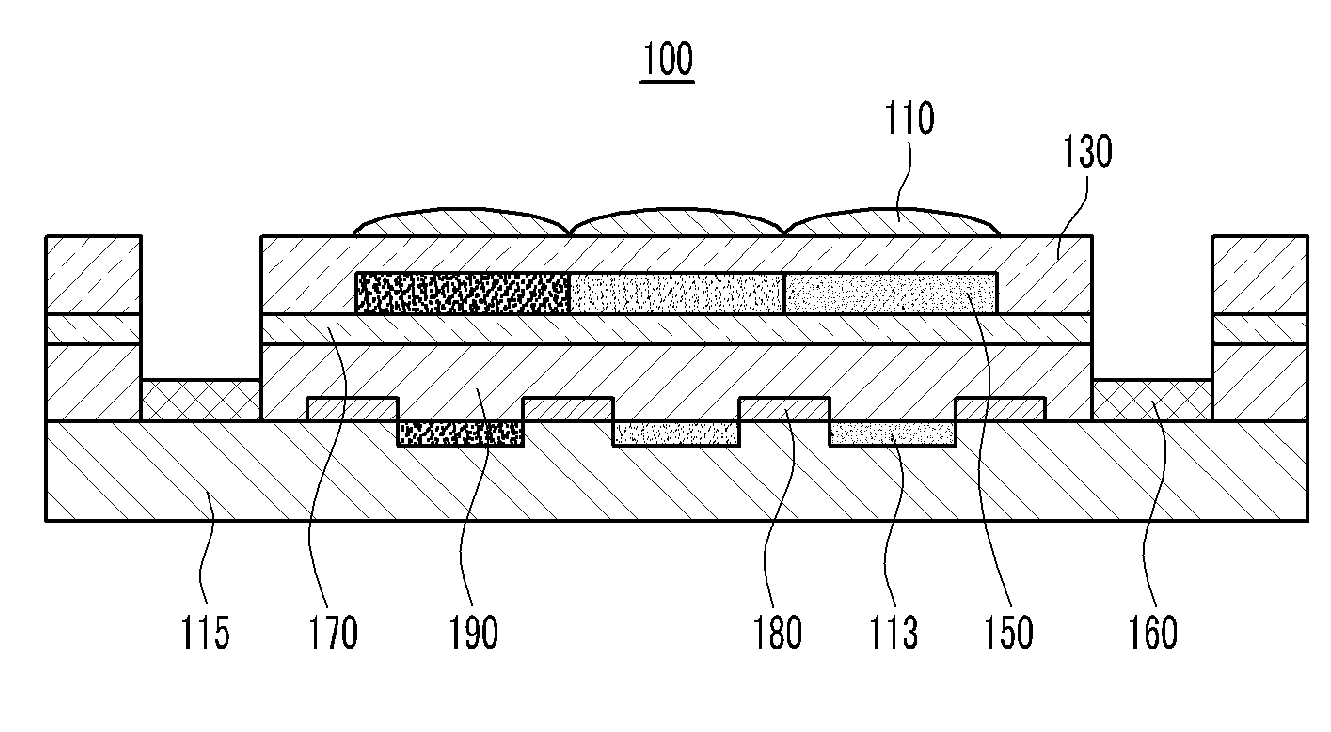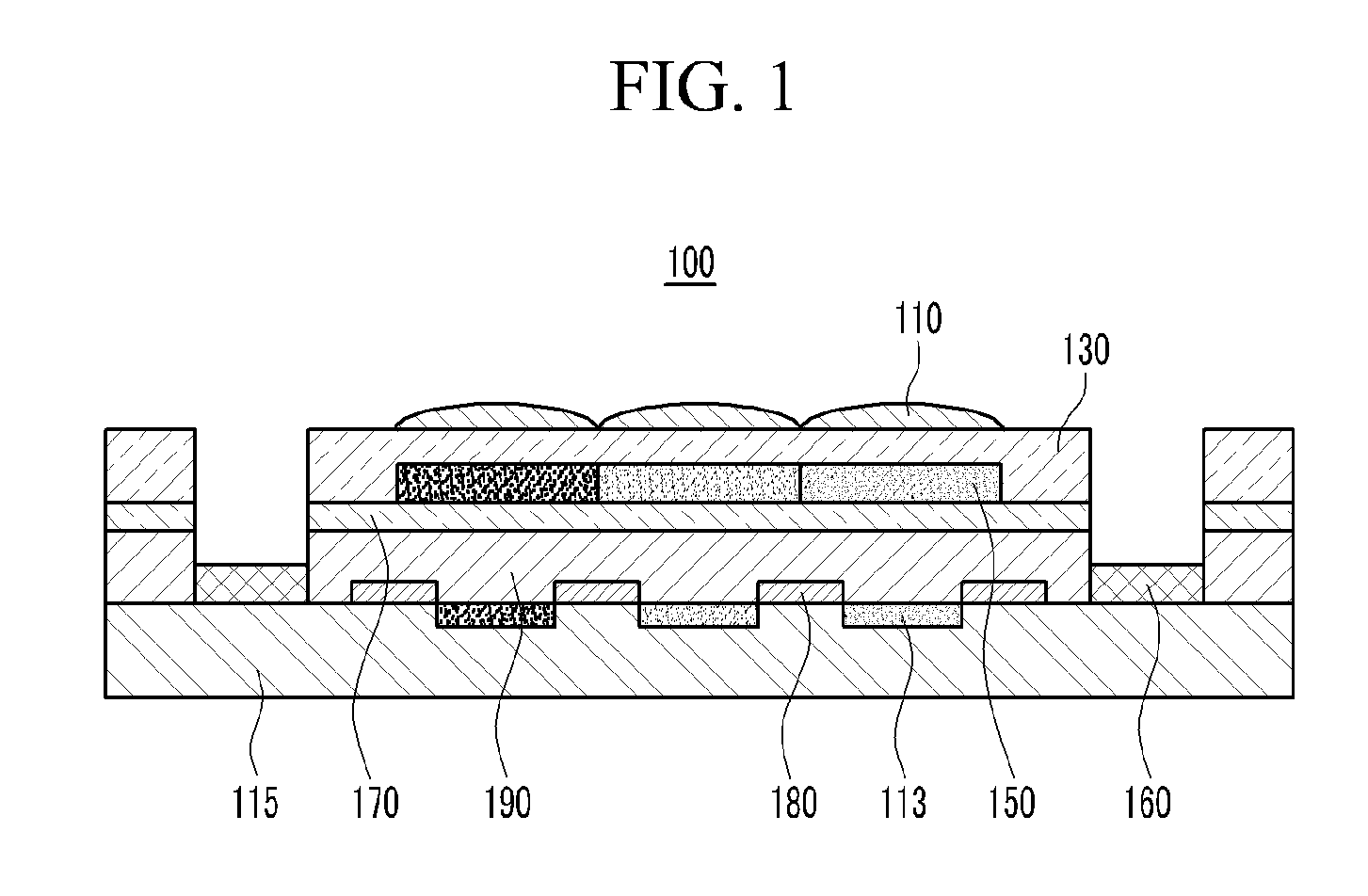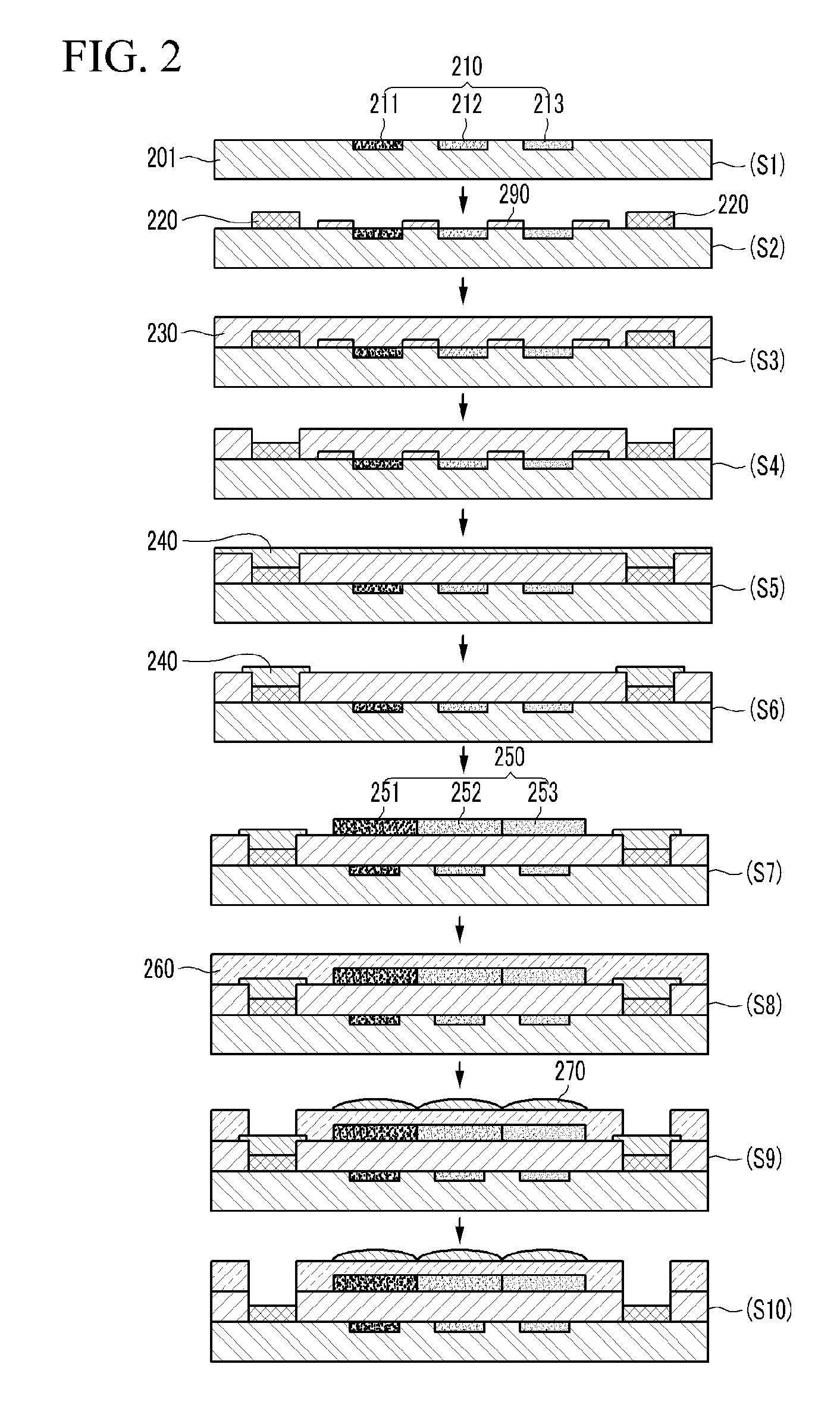Photosensitive resin composition for pad protective layer, and method for making image sensor using the same
a technology of photosensitive resin and protective layer, which is applied in the direction of photosensitive materials, instruments, photomechanical equipment, etc., can solve the problems of dyes with long-term reliability problems, deterioration of resolution, and deterioration of photoresistance or thermal resistance, so as to reduce the pixel size of the image sensor and reduce the phenomenon
- Summary
- Abstract
- Description
- Claims
- Application Information
AI Technical Summary
Benefits of technology
Problems solved by technology
Method used
Image
Examples
synthesis example 1
[0139]
(1) Monomer with a unit representedby Chemical Formula 1Methacrylic acid15g(2) Monomer with a unit representedby Chemical Formula 2Styrene10g(3) Monomer with a unit representedby Chemical Formula 3Dicyclopentanyl methacrylate75g(4) Radical polymerization catalyst2,2′-azobis (2,4-dimethyl valeronitrile)10g(5) SolventPropylene glycol monomethyl ether acetate208.76g
[0140]Air is substituted with nitrogen in a flask mounted with an agitator, a reflux condenser, a drying tunnel, a nitrogen introducer, a thermometer, and a circulator capable of controlling temperature to provide a nitrogen atmosphere, then the above-mentioned materials are added into the flask.
[0141]The flask is immersed in a oil bath and polymerization takes place at a reaction temperature of 70° C. for 3 hours with agitation to provide an alkali soluble resin (hereinafter referred to as “copolymer 1”) having a molecular weight (Mw) of 20,000.
synthesis examples 2 to 10
[0142]Alkali soluble resins (hereinafter referred to as “copolymers 2 to 10”) are prepared in accordance with the same procedure as in Synthesis Example 1, except that the kind and amount of the monomer are changed.
[0143]The kind and amount of the monomers in Synthesis Examples 1 to 10, the acid value, and the molecular weight of the copolymers are shown in the following Table 1.
TABLE 1copolymerAcid valueMolecularMonomer (wt %)(mgKOH / weightMAASTDCMIBMABzMASMAGMAg)(Mw)Synthesis151075————9520000Example 1Synthesis1510—75———9520000Example 2Synthesis1510——75——9523000Example 3Synthesis1510———75—9523000Example 4Synthesis15101515540—9524000Example 5Synthesis15201515530—9525000Example 6Synthesis155151554059522000Example 7Synthesis15515151540—9524000Example 8Synthesis1510151554059525000Example 9Synthesis5101515550—5025000Example 10(1) Monomer with a unit represented by Chemical Formula 1Methacrylic acid (MAA)(2) Monomer with a unit represented by Chemical Formula 2Styrene (ST)(3) Monomer with...
example 1
[0145]A photosensitive resin composition shown in the following Table 2 is prepared by using copolymer 1 obtained from Synthesis Example 1.
TABLE 2ComponentContent (g)Alkali soluble resincopolymer 115.0Reactive unsaturateddipentaerythritolhexaacrylate16.5compoundPhotoinitiatorIGR 369 (produced by Ciba-Geigy4.0Corporation)Solventpropyleneglycol methyletheracetate63.71Other additiveγ-glycidoxy propyl trimethoxysilane0.79(S-510, produced by ChissoCorporation)* the content of the copolymer 1 is based on solid content.
PUM
| Property | Measurement | Unit |
|---|---|---|
| sizes | aaaaa | aaaaa |
| size | aaaaa | aaaaa |
| acid value | aaaaa | aaaaa |
Abstract
Description
Claims
Application Information
 Login to View More
Login to View More - R&D
- Intellectual Property
- Life Sciences
- Materials
- Tech Scout
- Unparalleled Data Quality
- Higher Quality Content
- 60% Fewer Hallucinations
Browse by: Latest US Patents, China's latest patents, Technical Efficacy Thesaurus, Application Domain, Technology Topic, Popular Technical Reports.
© 2025 PatSnap. All rights reserved.Legal|Privacy policy|Modern Slavery Act Transparency Statement|Sitemap|About US| Contact US: help@patsnap.com



